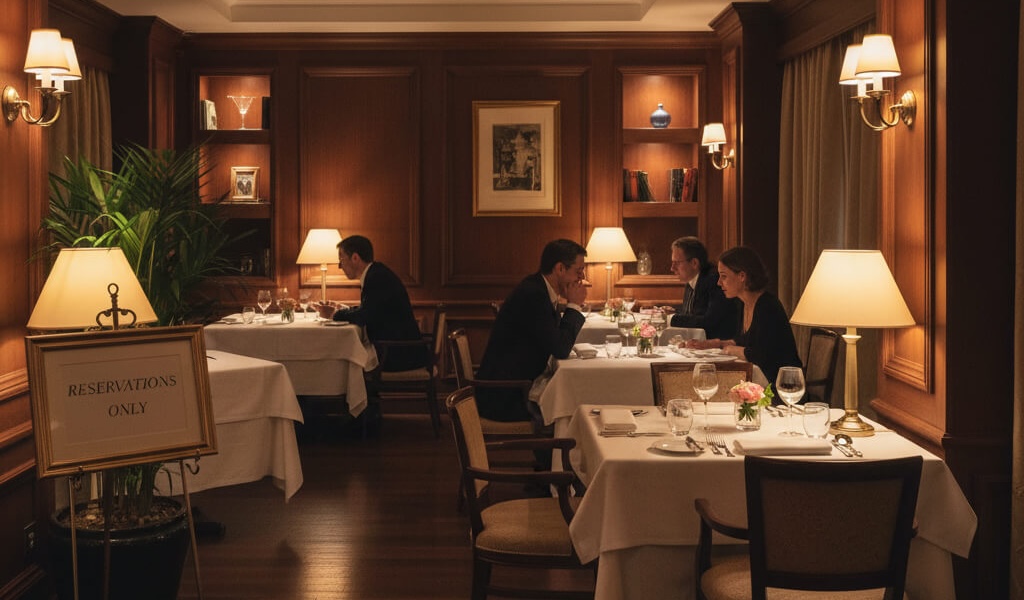October 06, 2025

In an age where diners have endless restaurant options and digital distractions, standing out isn’t about being bigger — it’s about being smarter. Limited seating, when used intentionally, can become a competitive advantage that boosts your brand’s value, increases pricing power, and builds emotional connections with guests.
This isn’t just a trend among high-end eateries. From cozy bistros to chef-driven pop-ups, restaurants that leverage exclusivity see increased demand, stronger word-of-mouth, and more intentional dining behaviors — both in-person and online.
Let’s break down how you can turn a small dining room into a powerful marketing engine.
Scarcity is one of the oldest psychological motivators — and one of the most effective. When availability is limited, perceived value skyrockets. In restaurants, fewer tables mean less access — and less access signals higher quality. Diners naturally assume, “If it’s hard to get into, it must be worth the wait.”
This mirrors the shift many restaurants are making away from crowded third-party delivery platforms toward direct online ordering. When customers interact directly with your brand — whether it’s booking a limited seat or placing an order through your website — they feel prioritized and more connected.
A Harvard Business Review article confirms that scarcity not only increases perceived value but also accelerates decision-making — making diners more likely to act fast on a reservation or promotion.
Small dining rooms create a feeling of intimacy that’s hard to replicate in large spaces. With fewer guests, your team can offer personalized service — remembering names, dietary preferences, and even favorite wines. This level of attention builds loyalty and makes guests feel like insiders.
It’s also an influencer magnet. As RocketPages explains here, micro-influencers love showcasing unique, intimate dining moments that feel exclusive — making limited-seating venues more photogenic, more shareable, and more desirable on social platforms.
Influencer tip: Create a small corner or chef’s table with a “by reservation only” vibe. Feature it in your content. The exclusivity alone can drive online bookings — especially when combined with a call to action via your website or email list.
You don’t need chandeliers or a celebrity chef to charge more — you need perceived exclusivity. Limited seating naturally creates the optics of high demand, which justifies premium pricing.
Restaurants that lean into this model often outperform larger competitors on margin, especially when they cut out third-party delivery fees and focus on building direct ordering systems through their own digital platforms.
What’s more, integrating systems like pre-paid reservations, deposit holds, or waitlist apps adds another layer of commitment and value perception. Guests who book and pay in advance see the meal as more of an experience — not just dinner.
Want to maintain exclusivity without excluding? Consider staggered seating or limited walk-in slots alongside reserved tables to strike the balance between high-demand and hospitality.
You don’t need a massive budget to market exclusivity — you need focus. With limited seating, every table matters more. That means it’s worth investing in local SEO, email marketing, and social content that builds buzz and books tables efficiently.
For example, a well-timed Instagram Reel showing your full reservations board, or a behind-the-scenes look at a sold-out night, can create digital FOMO that drives real bookings — without spending on ads.
This RocketPages guide explains how to use grassroots marketing, storytelling, and local partnerships to amplify demand — perfect for limited-capacity spots that need quality over quantity.
Pro tip: Use your website to capture emails from people who didn’t get a reservation. A simple “Notify Me When A Table Opens” list keeps interest alive and builds your future booking pipeline.
It’s important not to confuse “exclusive” with “unwelcoming.” In fact, exclusivity works best when it’s paired with authenticity and care.
Here are subtle ways to make your limited seating feel intentional — not exclusionary:
These kinds of experiences allow you to control the narrative, collect valuable content, and drive urgency — all while fostering community. And when wrapped in compelling storytelling on your website and social channels, they help you stand out in a saturated market.
If your website can support that journey — from capturing leads to showcasing behind-the-scenes exclusives — you’re already ahead. This article on the future of restaurant websites dives into how your digital presence can reinforce the kind of brand experience your small space delivers in person.
Limited seating isn’t a weakness — it’s a strategic advantage. By embracing the psychology of scarcity, delivering unmatched intimacy, and amplifying your presence online, you can turn your small footprint into a high-demand, high-value destination.
In the end, diners don’t just want food — they want to feel something special. If your space can deliver that, they’ll remember it. They’ll talk about it. And they’ll come back for it — even if they have to wait.
Stay up to date with the latest tips, expert insights, product reviews, and step-by-step guides to help you grow, create, and succeed—no matter your industry or passion.